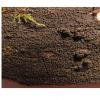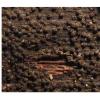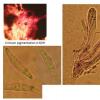
21-12-2025 21:32
Pol DebaenstHello, Garden, Burgweg 19, Veurne, BelgiumOn 10/1

22-12-2025 00:47
Patrice TANCHAUDBonsoir, récolte à proximité du milieu dunaire

21-12-2025 21:40
Isabelle CharissouBonjour, j'aimerais connaitre les références de

21-12-2025 21:31
Pol DebaenstHello, Garden, Burgweg 19, Veurne, BelgiumOn 10/1

21-12-2025 21:31
Pol DebaenstHello, Garden, Burgweg 19, Veurne, BelgiumOn 10/1

20-12-2025 23:08
Patrice TANCHAUDBonsoir, récolte sur sol sablonneux dans l'arri�

21-12-2025 09:32
Hello.A tiny ascomycete found embedded in wood in

20-12-2025 15:47
Mirek GrycHi.These grew on pine wood that was heavily covere
? Lophiotrema with crimson interior in KOH
Alex Akulov,
20-12-2015 13:27
 Dear friends
Dear friendsCan you help me to identificate one Ascomycete fungus with very distinct macromorphology? I think it may be Lophiotrema sp., but have no idea what same. May be you already familiar with it.
Fructification formed on the rotten decorticated wood of foliage tree (cf. Quercus) in the maple-linden-oak forest).
Pseudothecia 315-430 µm in diam., black, solid, thick-walled, with bases immersed in the thin black stroma, which cover all substratum surface.
In the mature ascomata the upper part of pseudothecia splits and exposes the brown interior. In KOH ascomata interior distinctly stay crimson.
Asci bitinicate, av. 95 × 14,5 µm, wider at the top and gradually tapering to the stipe. Pseudoparaphyses abundant, branched, filiform. Ascospores mostly two-seriate, fusiform, slightly curved, with (3-) 5-7 transverse septae, with distinctly inflated submedian cell, (22-) 23,6-26,6 × 4,4-5,7 µm (in the broadest part). Ascospores at most hyaline, but some brownish were observed too.
Photos turned out not very successful, but allow you to see the main features.
Grateful before for help,
Alex
Guy Marson,
21-12-2015 01:02
Re : ? Lophiotrema with crimson interior in KOH
Hi Alex,
You may take a look in the Roussoellaceae if your species has crimson colored ostioles and spores with a +/- big gel sheet.
Cheers,
Guy
You may take a look in the Roussoellaceae if your species has crimson colored ostioles and spores with a +/- big gel sheet.
Cheers,
Guy



